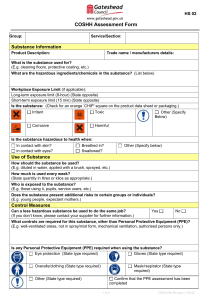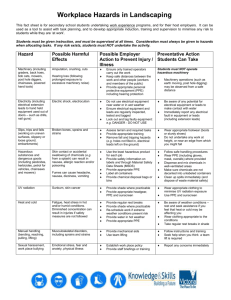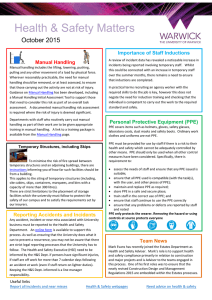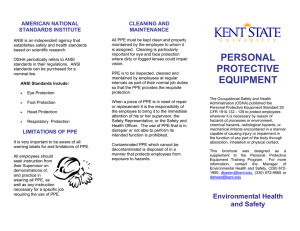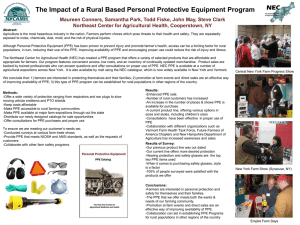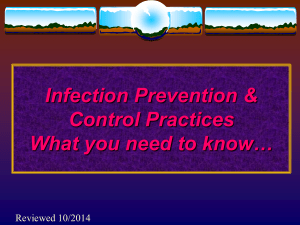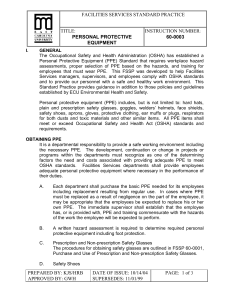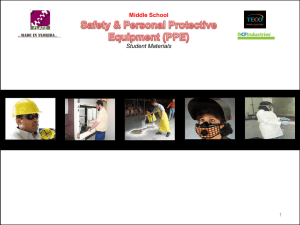Chapter 14
advertisement
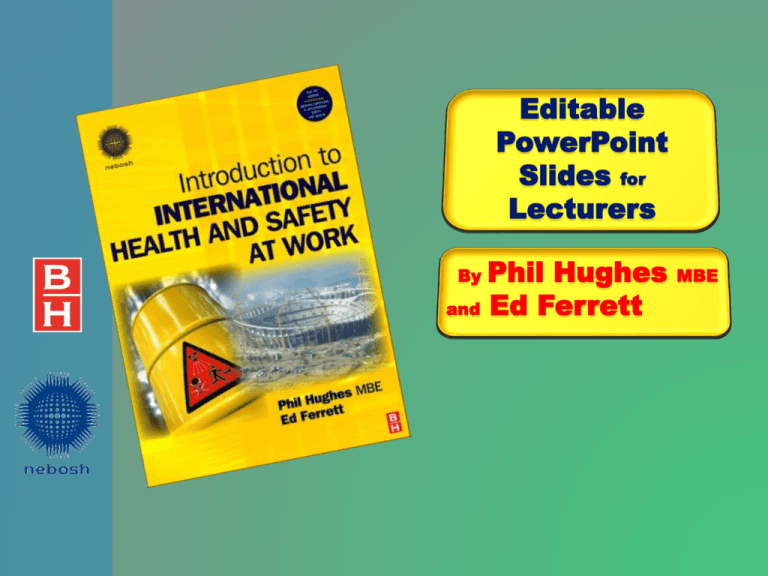
Editable PowerPoint Slides for Lecturers Phil Hughes and Ed Ferrett By MBE Chapter 14 Chemical and biological Health hazards and control Chemical and biological Health hazards and control After reading this chapter you should be able to: 1. recognize the forms of, and classification of, substances hazardous to health 2. explain the factors to be considered when undertaking a preliminary assessment of the health risks from substances commonly encountered in the workplace 3. describe the use and limitations of workplace exposure limits including the purpose of long-term and short-term exposure limits 4. distinguish between acute and chronic health effects 5. outline control measures that should be used to reduce the risk of ill-health from exposure to hazardous substances 6. outline the basic requirements related to disposal of waste and effluent (and the control of atmospheric pollution) Figure 14.1 Existing European chemical symbols and the new GHS International symbols Figure 14.2 Hazardous substances – principal routes of entry into the human body Figure 14.3(a)(b) Upper and lower respiratory system Figure 14.4 The nervous system Figure 14.5 The cardiovascular system Figure 14.6 Parts of the urinary system Figure 14.7 The skin – main structures in the dermis Figure 14.14 Chemical storage in France which needs to comply with European standards Figure 14.9 Product labels and material safety data sheets Figure 14.10 Hand pump and stain detectors Figure 14.11 Common elements of a simple LEV system Figure 14.12 Natural ventilation in a building The principal requirements of PPE are as follows: • PPE which is suitable for the wearer and the task • Compatibility and effectiveness of the use of multiple PPE • A risk assessment to determine the need and suitability of proposed PPE • A suitable maintenance programme for the PPE • Suitable accommodation for the storage of the PPE when not in use • Information, instruction and training for the user of PPE • The supervision of the use of personal protective equipment by employees and a reporting system for defects Figure 14.13 Personal Protective Equipment at Work Filtering half mask Compressed air line breathing apparatus with full-face mask fitted with demand valve Half mask re-usable with filters Figure 14.14 Types of Respiratory protective equipment Figure 14.15 Variety of eye protection goggles Figure 14.16 Heavy industrial air pollution Figure 14.17(a) Water pollution from an oil spillage Figure 14.17(b) Water pollution from plastic waste and other solids Figure 14.18 Wastes collection Figure 14.19 Electronic waste from developed countries in Europe under WEEE

